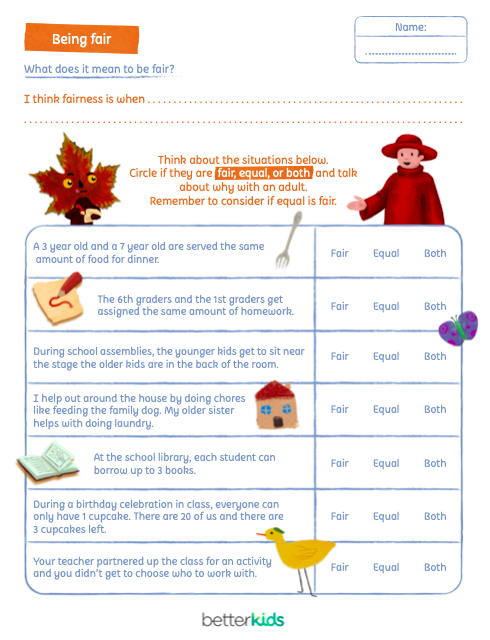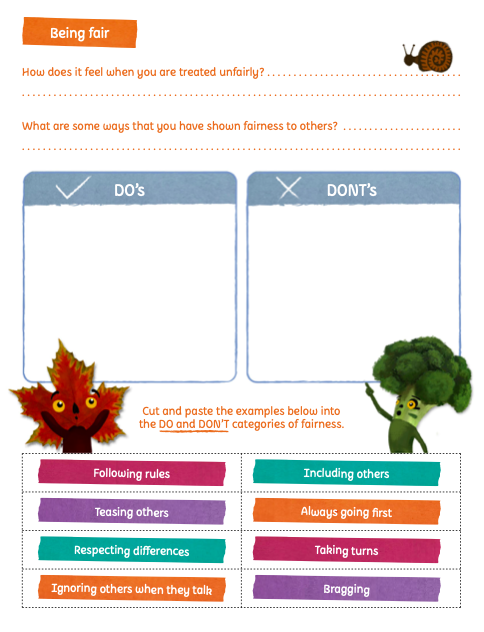How many times have you heard a child say, “That’s not fair!” and when you try to explain, the inevitable back and forth ensues, and they are nowhere closer to understanding the situation. You may hear this exclamation more often during times of increased anxiety and restlessness. Sometimes this will simply be a child’s go to phrase when they are upset or are losing their patience. In that case, it’s worth digging a bit to uncover their true feelings. Generally, however, as children get to around 4 years old, they are beginning to understand the concept of fairness, but will need conversations and guidance on what it means.
Understanding fairness fosters empathy
Helping children understand fairness is an important part of growing up and practicing empathy. When we understand what others need and perhaps what we don’t, we recognize our differences and think a little beyond ourselves. We get to step into someone else’s shoes for a moment and consider their life.
Each year, the students in my classroom have a lesson on fairness (or equity) and equality - they just don’t know it until later. I launch this lesson by asking for volunteers. I will place something high up on the board or a shelf and call on two students to reach for it. It could be a special object or simply a marker. I will specifically call on a taller and smaller volunteer. I’m always careful to make sure that these children are comfortable in the spotlight and you’ll see why. When the taller student reaches for the object, they’ll get it. Hurray! But when the smaller student makes the attempt, the object will be just out of their reach. Then I ask the class for ideas - How can we help them?
“Give them a chair!”
“I can help them because I’m taller!”
“______ can’t be put up that high because the shorter kids can’t get them.”
Bingo.
So this nicely leads into a discussion of fair vs. equal. The two volunteers cannot have equal treatment, because that truly isn’t fair or even necessary. The taller child already has a leg up! *Ba dum pum* It’s evident to the class that they don’t need a stool or someone to help them reach. The other child, however, requires some accommodation to have an equal opportunity at success.
Equality has to do with sameness, just like in math. An equal sign tells us that both sides of the equation are exactly the same (3 + 2 = 5). Fair is different. Fair means everyone gets what they need, based on visible gaps in opportunity. And sometimes people will have different needs because we are unique individuals.
For example:
Some children wear glasses and some don’t. That’s not equal, but it’s fair because not everyone needs glasses to see and learn best.
Some children may receive a different lunch in school because they have food allergies. That’s not equal, but it’s fair. It’s what that child needs to be healthy and safe.
Fairness at school and at home
Understanding the concept of fairness is critical in a young person’s life, but is especially important in school where they are amongst peers that they can compare themselves to. In the classroom, some children will receive accommodations to help them meet their academic or behavioral goals. Some children will inevitably receive more adult attention through special services. They may even need an individual behavior plan with built in incentives that seem special or “not fair”. As children become more exposed to the concept of fairness or in other words equity, they will grow to be more considerate of others’ needs and more aware of their own.
At home, this is also applicable to sibling relationships. A younger sibling or a baby will need more attention because they are less independent and need more adult care. This is an opportunity to remind the older child that although it feels unfair, you are trying to give everyone what they need to be well. You can remind the older child about some of the opportunities they receive, because of their own individual needs and capabilities, such as picking out their own costume for Halloween.
A child who recognizes fairness can also be more empathetic with parents, who are often trying to do their best. They may exclaim, “That’s not fair!” when you’ve forgotten that they wanted the cookies with chocolate chips and not sprinkles, but maybe they’ll be a little more understanding when you explain that you made a mistake when rushing to get to work. Why? So that you can provide for the family and buy the things that everyone needs to live well.
They may be disappointed, but that is part of life. Children will not always get what they want whenever they want, and if they did, it would be a detriment to their development. Learning and applying the concept of fairness will stretch a child’s ability to be patient and lay the foundation for developing empathy and sensitivity towards others.
Continue your practice of fairness at home with this resource:
A prior version of this article was originally published on May 18, 2020.





